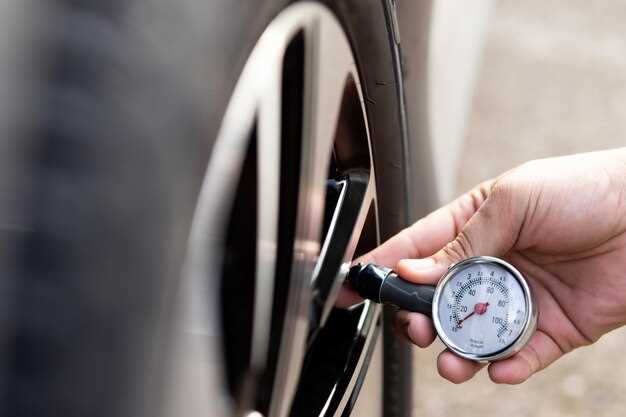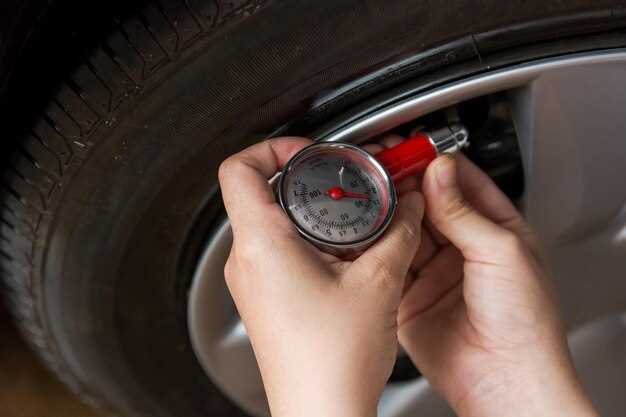
How to maintain tire pressure in all seasons

Proper tire maintenance is essential for ensuring a safe and efficient driving experience. One of the most critical aspects of tire care is maintaining the correct tire pressure year-round. This practice not only improves vehicle handling and fuel efficiency, but it also extends the life of your tires, ultimately saving you money in the long run.
Throughout the seasons, fluctuating temperatures can cause tire pressure to rise or fall significantly. In winter, cold temperatures can lead to lower pressure, while warmer summer months can cause it to increase. Regularly checking your tire pressure allows you to make necessary adjustments, keeping your tires within the recommended range regardless of the weather conditions.
Incorporating simple habits into your routine can help you maintain optimal tire pressure. By following expert tips and being proactive, you can enhance your vehicle’s performance and enjoy peace of mind knowing that your tires are in top condition. Proper tire maintenance not only promotes safety but also contributes to a more fuel-efficient ride, benefiting both your wallet and the environment.
Understanding Tire PSI for Optimal Performance

Tire pressure, measured in pounds per square inch (PSI), is a critical factor in vehicle maintenance that significantly impacts performance, safety, and fuel efficiency. Maintaining the correct PSI ensures that tires function effectively, providing better traction, reducing wear, and optimizing handling characteristics.
Each vehicle has a recommended PSI level, typically found on a sticker inside the driver’s door or in the owner’s manual. This specification takes into account the vehicle’s weight and intended use, making it essential to adhere to these guidelines for optimal results.
Low tire pressure can lead to increased rolling resistance, resulting in poorer fuel economy and increased tire wear. It can also compromise vehicle handling and lead to overheating, which may result in blowouts. Regularly checking and adjusting tire pressure helps mitigate these risks while enhancing overall driving performance.
On the other hand, high tire pressure may cause reduced traction and a harsh ride, as tires become less flexible. Overinflated tires can also lead to uneven wear patterns, particularly in the center of the tread, which shortens tire lifespan. Therefore, maintaining the right balance is crucial for both safety and cost-effectiveness.
In varying weather conditions, it’s important to regularly monitor tire pressure, as temperature fluctuations can cause PSI levels to change. A drop in temperature often leads to decreased pressure, so checking tires before any long trip or season change is advisable. Overall, understanding and managing tire PSI is fundamental to ensure optimal performance, durability, and safety of your vehicle.
Seasonal Adjustments: How Temperature Affects Tire Pressure
Temperature changes significantly influence tire pressure. As a general rule, for every 10°F change in temperature, tire pressure can increase or decrease by about 1 psi. This fluctuation is crucial for drivers to consider, especially when transitioning between seasons.
In colder months, lower temperatures can cause the air inside tires to contract, leading to reduced pressure. This is critical because under-inflated tires can negatively impact vehicle handling, fuel efficiency, and tire longevity. Regularly checking tire pressure during winter can prevent these issues and ensure optimal performance on slippery roads.
Conversely, during warmer months, rising temperatures can increase tire pressure as the air inside expands. Over-inflated tires may lead to a harsher ride and decreased traction, putting drivers at risk, especially in hot conditions. Monitoring tire pressure in the summer is essential to maintain safe driving conditions and prolong tire life.
Drivers should be proactive in checking their tire pressure throughout the year and adjusting it according to the temperature changes. Using a reliable tire pressure gauge helps ensure that tires are correctly inflated, thereby maximizing safety and efficiency across all seasons.
Best Practices for Regular Tire Pressure Checks and Maintenance

Maintaining proper tire pressure is essential for safety and performance. Regular checks can prevent tire wear and improve fuel efficiency. Follow these best practices for effective tire pressure management.
First, check tire pressure at least once a month and before long trips. Use a reliable pressure gauge to measure the air pressure in psi. Always check when the tires are cold, ideally before driving, as heat can cause pressure to rise.
Next, consult the vehicle manufacturer’s specifications for the recommended psi level. This information is usually found on a sticker inside the driver’s side door or in the owner’s manual. Ensuring your tires are inflated to the optimal level will enhance handling and reduce the risk of blowouts.
Additionally, inspect your tires for visible signs of wear or damage. Look for cracks, bulges, or objects embedded in the tread. These issues can affect tire pressure and overall safety, so take action immediately if any problems arise.
It’s also beneficial to rotate your tires regularly, as this can contribute to more uniform wear. Ensure all tires, including the spare, are maintained at the correct psi levels, as tires can lose air over time even when not in use.
Lastly, consider investing in tire pressure monitoring systems (TPMS) if you haven’t already. These systems provide real-time feedback on tire pressure, alerting you promptly if any tire drops below the recommended psi. This proactive approach can significantly reduce the risk of unforeseen issues and enhance your vehicle’s performance.